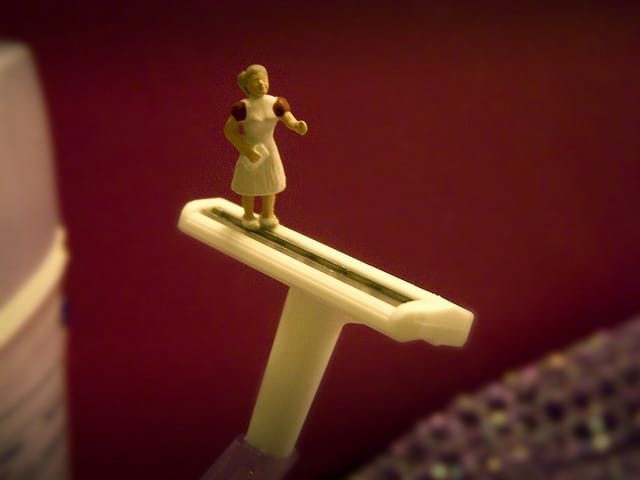The Pink Tax: Why Do Women’s Razor Blades Cost More Than Men’s?

Tax day may be over, but debate about the “pink tax” rages on.
The pink tax is a subtle, maybe-not-even-noticeable-at-first price hike for women’s products that are identical to those made for men, like razors and shampoo.
Listen Money Matters compiled a number of examples where women’s versions (“pink products”) cost more than the same products marketed to men. And the Tumblr Woman Tax (only in French, sadly, but you don’t need to speak the language to understand these photos) is working to collect more examples.
How much money have you spent on the pink tax?
How Much is the Pink Tax Worth?
Many pink products cost more than otherwise identical products made for men. The price difference for each individual item is often only 50 cents or a couple of bucks, but it adds up to more than $1,300 a year.
Sometimes these price differences seem somewhat understandable. Women’s shirts cost more to launder than men’s shirts do because most industrial pressing machines are built for larger shirts, so women’s shirts often require hand-pressing. Though, as writer Amanda Oliver notes on Groundswell, why not invest in a smaller or unisex machine?
However, some of these price differences are mind-boggling. Why on earth would Excedrin Complete Menstrual cost more at Walgreens than Excedrin Extra Strength, despite having the exact same formulation of active ingredients? Why would pink razor blades cost more than the ones in “manly” colors? We’re not sure, other than the fact that many companies clearly think they can get away with it. (To be clear, in both these examples, the prices are set by the stores, not the manufacturers. But no matter who sets the price, women shouldn’t be getting ripped off.)
Can You Avoid the Pink Tax?
An easy solution to this problem is to buy the “men’s” version of the product, as long as you don’t mind a different scent or color.
But sometimes that isn’t possible. Women tend to pay more for car repairs than men, though the study noted that when both men and women had a general idea of how much the repair should cost, that gender difference disappeared. (And women who “leaned in” and asked for a discount were more likely to get one than men were — so ladies, don’t be afraid to negotiate!)
And what about in games and apps? Even a 12-year-old noticed the gender disparity in her favorite game app, and called out its manufacturers in a Washington Post op-ed piece. Many free-to-play games have bonus content that players can either unlock through gameplay or by paying. And most of them, noticed avid gamer Madeline Messer, charge players money to play as a female character, even though male characters are typically free. The average price to buy a female character? $7.53. One Disney game charged almost $30 for the single available female character.
The good news is that based on Messer’s observations, her favorite game’s co-creator is adding a free female character, and Disney is lowering its price for the female avatar.
In the meantime, other than shopping in the men’s section, there’s not much you can do to avoid the pink tax. You could try to shop for certified feminist products, but only a few companies, like L’Oreal and IKEA, have been certified.
But the best way to avoid the pink tax is to help get rid of it. Don’t just shop with your wallet; call out companies when you notice discrepancies. Ask them why women’s products cost more than men’s. Blast them on Twitter or other social media.
The pink tax is not new, but it’s long overdue to disappear. Read more about how companies overcharge women at Listen Money Matters.
Your Turn: Have you noticed the pink tax in your own shopping? What’s the worst example you’ve seen?
Rachel Kaufman may or may not be two dozen hamsters masquerading as one human in a trench coat.


















